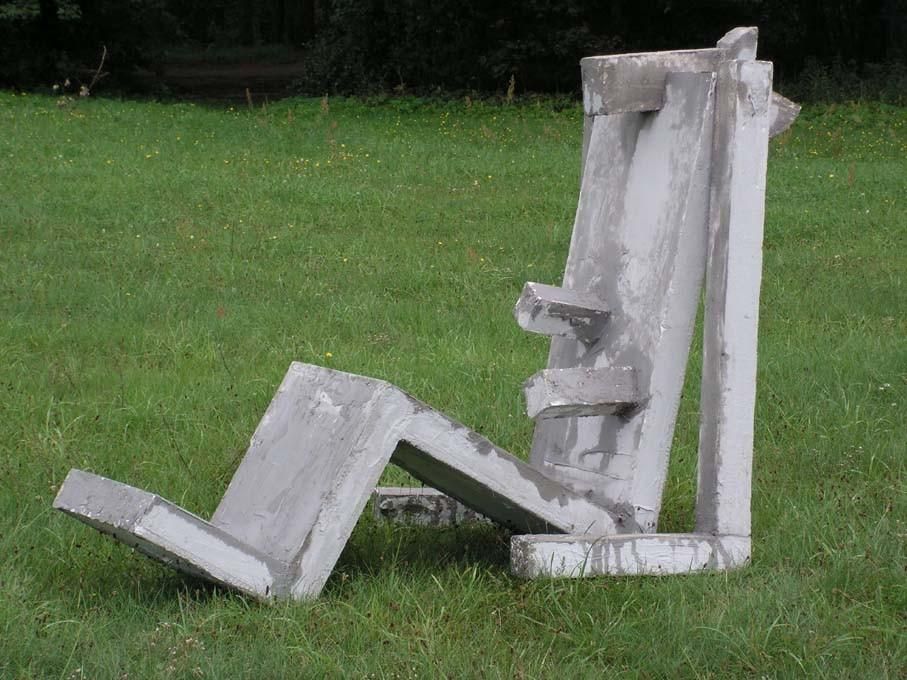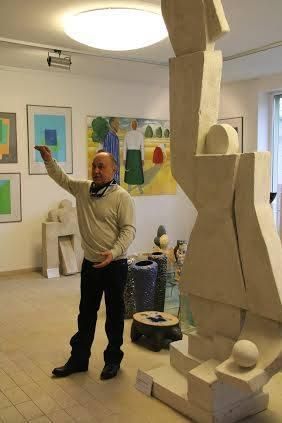Presentation of the Cube - The most important news of the "cultural" section of the "Yellow Road"
The most important news of the "cultural" section of the "Yellow Road" is an article about the presentation of the cube as the main subject of sculpture (first form).
Yellow Road → 2021 - new harvest: Presentation of the Cube - the main object in sculpture,</b
September 4, 2021
I think that the significance of this event is important not only for me. Now sculpture (as a part of plastic art) also has its own point of reference.
That is why I decided to repeat (partially) that post.
"Why is it important now to remember about Suprematism? Because reflecting on the main sculpture form, I certainly use Black Square of Malevich as the starting point.
Of course, Suprematism per se is just a particular case of Abstract Art. The merit of Malevich consists of putting a lot of efforts to give a precise characteristic of Suprematism. He described principles on which a suprematic painting is based. But Malevich wasn’t alone in this field.
Back in 1910 (5 years before Suprematism emerged) Kandinsky wrote in his book Concerning the Spiritual in Art:
The outer task may assume many different shapes; but it will never fail in one of two purposes:
(1) Either form aims at so limiting surfaces as to fashion of them some material object;
(2) Or form remains abstract, describing only a non-material, spiritual entity. Such non-material entities, with life and value as such, are a circle, a triangle, a rhombus, a trapeze, etc., many of them so complicated as to have no mathematical denomination.
All these forms are equal citizens in the realm of the abstract.”
Olga Rozanova believed that Malevich borrowed her idea of Suprematism. Today anyone can find online her reasoning in this argument.
It seems to me that today, a hundred years after those significant events, ‘geometric’ ideas are not only in the air but hang like a thick curtain over us. But application of geometrical forms and bodies (and compelling analysis thereof in the contemporary art) seemed too insignificant to me. Hence there appeared my own Geometrical Realism and Suprematic Realism.
In Suprematic Realism I started working with purely geometrical bodies. If we consider emergence of simplest geometrical forms on canvas, we will see that the rectangle is the most "passive", most inert form.
Passivity of the square (rectangle) prompted Kazimir Malevich to choose it as the main figure. Compressing the square from all the sides we can squeeze it until it becomes a point. But measures of the point are so tiny that research of its form is practically impossible. But changing limits (by unevenly compressing or lengthening) of the square we can end up with an oval (circle), triangle etc.


In Geometrical Realism passivity of the form, e.g. of rectangle, allowed me to use it in any art quality. The square is an object-chameleon, it depends on text, on the name, as the most abstract geometrical element which absorbs any name.
But while the term is still loosely defined, I will call geometrical realism only my own artworks. In Geometrical Realism the same elements are used as in Suprematism, but they are differently ‘colored’. Their application is more concrete. Here even names ‘landscape’ and ‘still life’ are appropriate (i.e. traditional use of the terms)
My use of cubes and parallelepipeds in first sculpture compositions (of Suprematic Realism) and multicolored rectanglees in collages is actually a result of speculations about rectangle as the most passive and therefore the most appropriate element for work, which easily becomes what you want it to be.


Then it is clear that zero point in sculpture is the cube.
If we agree with Malevich that the Black Square is a unique art object, a zero point and takes a special place in painting, then why cannot be in the sculpture a similar object?
However strange it may seem, but it took me about 30 years to come to this conclusion.


In my very first personal exhibition in Vilnius
(in Russian Cultural Center,1993) there was a painting "Red Square Rabbit, Blue Square Orange and Little Green Square Me, behind the Rabbit"
In 2010 I already exhibited a cube.To be more precise, it was a cube and a ball. Thus (in a ball and a cube) the famous sculptor Jacques Lipschitz and his wife Bertha were presented
In 2014 it was created and in 2015 in the exhibition “If Malevich were alive, he would be 137” the cube was not merely a cube, but an independent art object, without any filling. Its cardboard version is kept in my workshop to this day. That is, exactly 100 years after the Black Square of Malevich there came a 2-colored cube, the first sculpture object which claims to be the zero point in sculpture.
And now after seven years, already in 2021 I made up my mind to create a 1st letter of sculpture alphabet. In real size.

In my mind I imagined the cube with edge of 92.4 cm. But later when I had material in my hands and could visualize the cube more realistically, I ended up with these dimensions: 60.5 x 60.5 x 60.5 cm As for material, it’s made of wood, plywood, cardboard and acrylic. And also I made 10 author copies with dimensions: 13.2 x 13.2 x 13.2 cm.
Now we have the cube, 2-colored cube. The red helps the black square to leave 2-D plane and enter the world of sculpture. If we are to review the evolution of sculpture chronologically, we would come to the cube as the last artificial form and its red color is inward-oriented and will disappear when the sculpture is placed on a plane and cease its being as a volume body. And if we consider the cube as the very first abstract (geometrical) form of sculpture, then development of this form will certainly lead us to an infinite number of new forms. The use of color (color scheme) in new objects hasn’t been studied by me, or better said, hasn’t been defined.
Sergey Evtuhov, author of the project
